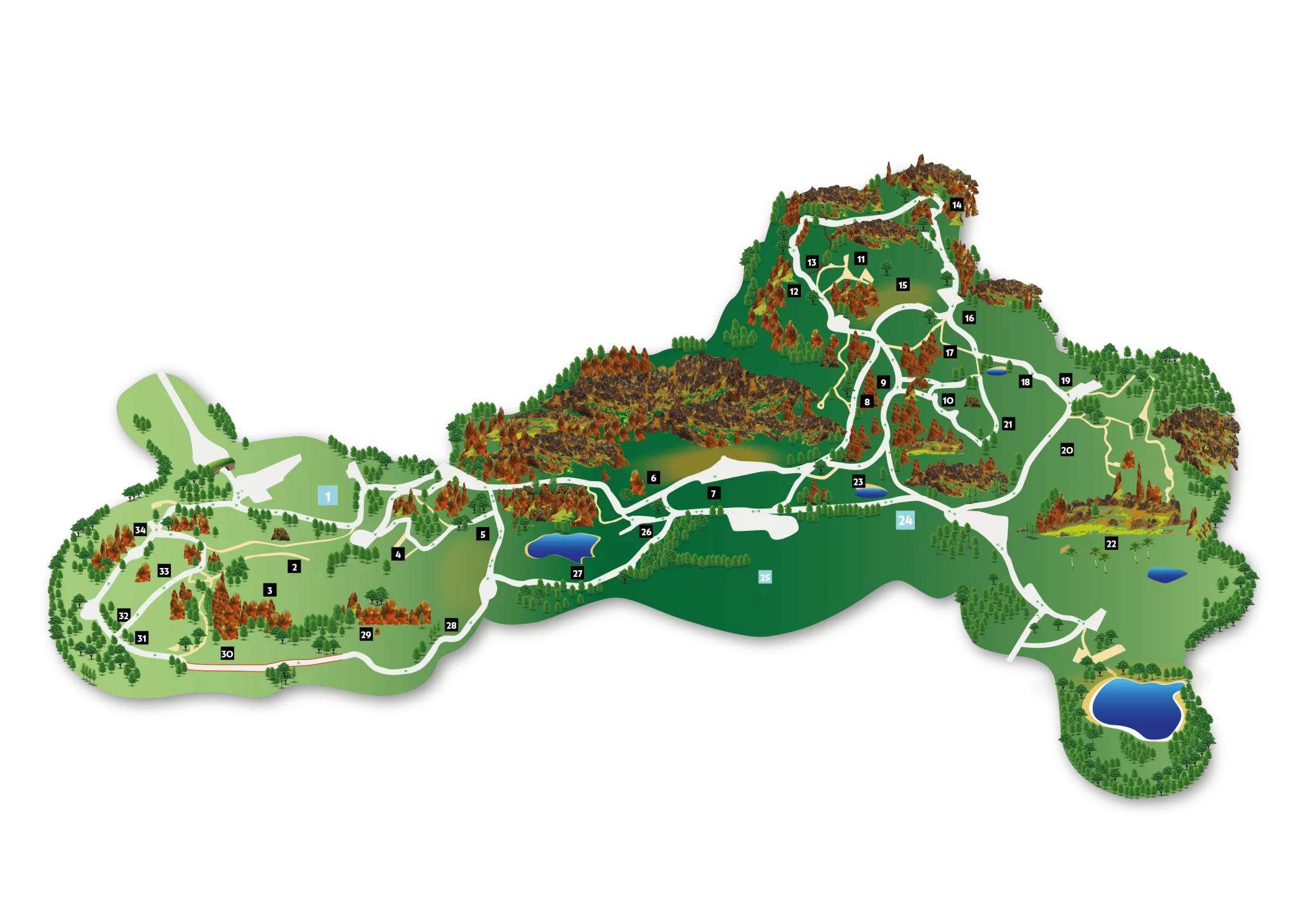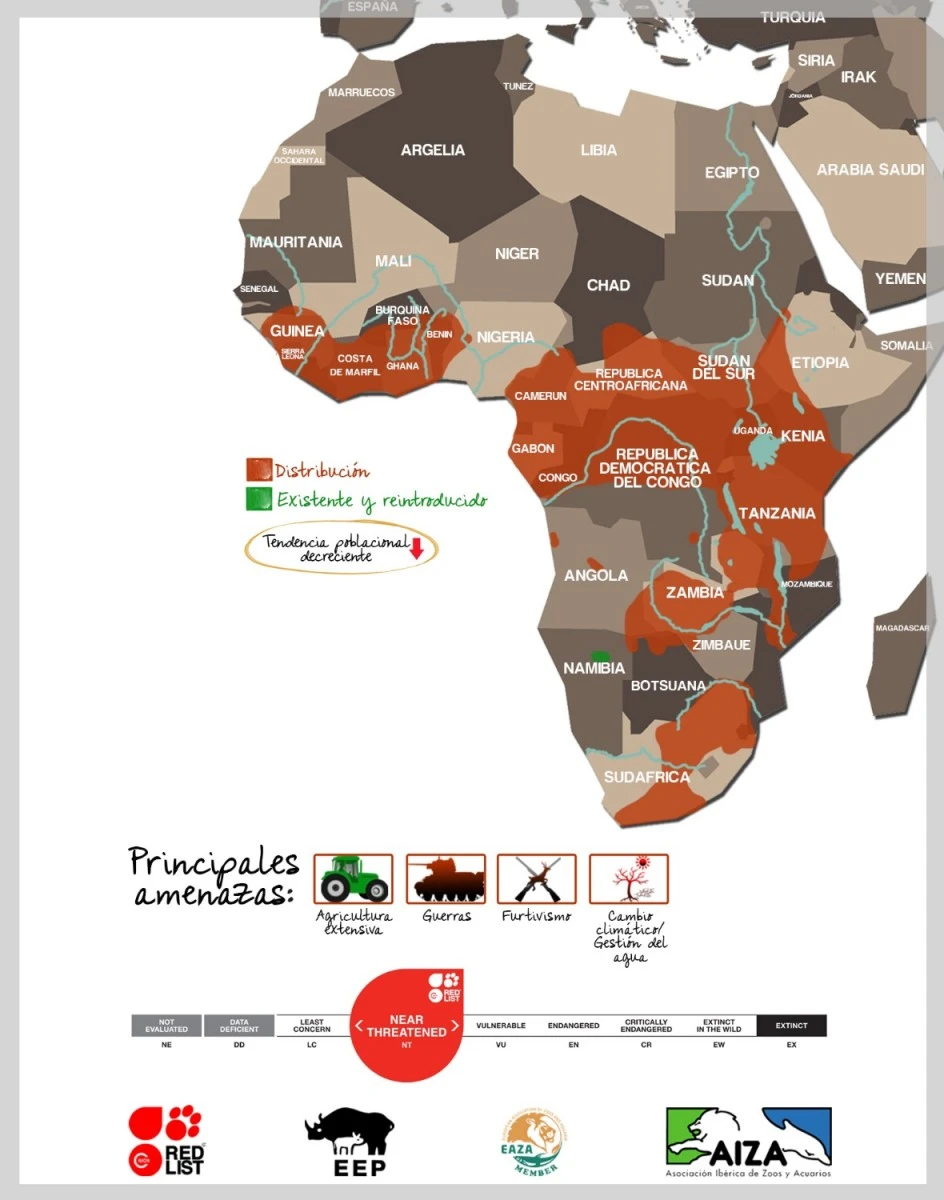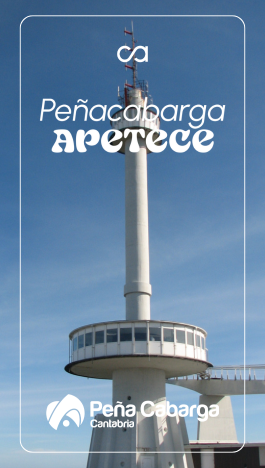
It is an impressive and robust animal, highly valued in both its domesticated and wild forms. Its relationship with humans has been very close throughout history due to its strength and resilience, characteristics that make it ideal for agricultural work, especially in areas like rice paddies and floodplains. Furthermore, its use as a pack and riding animal is common in many parts of the world.
Terrestrial animals, but with a crucial relationship with water. They enjoy water and are capable of swimming. They take advantage of muddy areas to wallow and manage to stay cool, regulate their body temperature, and keep themselves safe from annoying mosquitoes that proliferate in marshlands. It is because of this that this species inhabits the African elephant enclosure, where they have a large ‘pool’ and can also wallow in the puddles or mud holes that the pachyderms make with their tusks to take mud baths.
Although most current populations are domesticated, wild groups still exist in remote areas of Asia, especially in India, Nepal, Bhutan, and Thailand, although true wild populations are very scarce. These animals, which in their wild form are prey for large predators like tigers, show notable bravery when defending their group.







































































